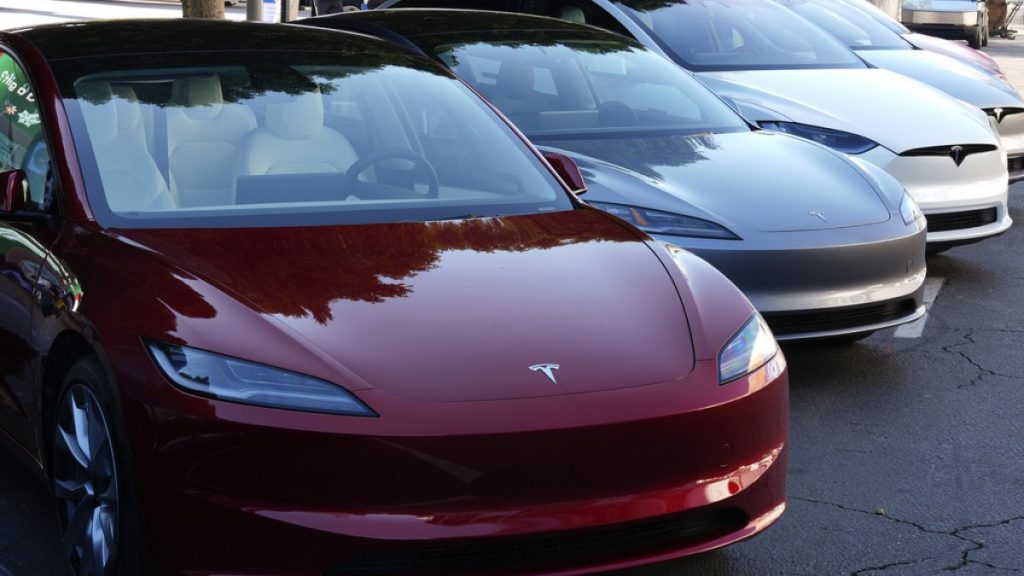The global electric vehicle (EV) market experienced a surge in November 2024, achieving a new sales record of 1.8 million units, surpassing the previous high set just one month earlier by 100,000. This remarkable growth propelled the year-to-date total to 15.2 million EVs, a substantial 25% increase compared to the same period in 2023. China played a dominant role in this surge, accounting for two-thirds of the November sales, further solidifying its position as the world’s leading EV market. This growth trajectory marks a significant acceleration in the global adoption of electric vehicles, signaling a potential tipping point in the transition towards sustainable transportation.
China’s November EV sales reached an unprecedented 1.3 million units, an increase of 50,000 vehicles from the previous month’s record. This robust performance was primarily driven by battery electric vehicles (BEVs), with leading brands such as Geely, Tesla, and Changan dominating the market. While BEVs constituted the bulk of November’s sales, plug-in hybrid electric vehicles (PHEVs) have experienced even stronger growth in China throughout 2024, nearly doubling in sales compared to the previous year. BEV sales, while still impressive, have seen a more moderate year-to-date growth of 18%. This indicates a dynamic and evolving market landscape within China, with diverse consumer preferences driving demand for both BEVs and PHEVs.
In contrast to the global surge and China’s dominance, the European EV market experienced a decline. November sales in the EU, EFTA, and UK combined fell by 3% compared to the same period in 2023, reaching 280,000 units. This brings the year-to-date total for the region to 2.7 million units, highlighting a noticeable slowdown in EV adoption compared to other regions. This sluggish performance comes despite the UK’s comparatively strong second half of 2024, with a 17% year-to-date increase attributed in part to the government’s Zero Emission Vehicle (ZEV) Mandate. The mandate, designed to incentivize EV sales through targets for car manufacturers, has seemingly had a limited impact on the broader European market.
The UK’s success in driving EV sales through the ZEV mandate, however, reveals a complex picture. Manufacturers, under pressure to meet these targets, have resorted to significant discounts, according to reports. This practice raises questions about the long-term sustainability of such policies and their potential impact on profitability within the automotive sector. Meanwhile, major European economies like Germany, France, and Italy continued to experience weak EV sales performance, contributing to the overall regional decline. Data from the European Automobile Manufacturers Association reveals a 4.9% drop in year-to-date EV sales volumes across the EU through October, with market share also falling from 14% to 13.2%.
This contrasting performance between Europe and other regions, particularly China, underscores the diverse factors influencing EV adoption. While policy interventions like the ZEV mandate can stimulate short-term growth, other challenges remain, including high production costs for European manufacturers and increasing competition from global players, particularly those in China. These factors have contributed to job cuts and plant closures within the European automotive industry, further highlighting the pressures faced by traditional carmakers in the transition to electric mobility. The future of the European EV market will likely depend on how effectively these challenges are addressed, and whether policy adjustments can create a more sustainable growth trajectory.
The North American market, encompassing the US and Canada, displayed consistent growth with a 10% increase year-to-date. This steady growth is projected to continue, potentially accelerated by then President-Elect Donald Trump’s reported intention to eliminate the existing Biden administration’s EV tax credit. This anticipated policy change is expected to motivate consumers to expedite purchases to take advantage of the tax credit before its potential removal. The interplay of policy, consumer behavior, and market competition will continue to shape the trajectory of the global EV market in the coming months and years.














